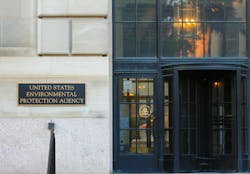EPA Releases One-Year Progress Report for PFAS Strategic Roadmap
U.S. EPA Press Release
The U.S. Environmental Protection Agency (EPA) released “A Year of Progress Under EPA’s PFAS Strategic Roadmap,” which underscores key actions taken by the agency during the first year of implementing the PFAS Roadmap. EPA is implementing a whole-of-agency approach, advancing science, and following the law to safeguard public health, protect the environment, and hold polluters accountable.
“EPA continues to deliver on its promise to confront PFAS and protect the health of people and communities across the nation,” said Radhika Fox, Assistant Administrator for Water and Co-Chair of EPA’s Council on PFAS. “Today’s progress report highlights how much we have accomplished in the first year of implementing the PFAS Roadmap. The report also signals important actions the agency will take in the year to come, including our work to invest $10 billion from President Biden’s Bipartisan Infrastructure Law in solutions to protect communities from emerging contaminants like PFAS.”
Since the Roadmap’s release in October 2021, EPA:
- Proposed to designate two PFAS as CERCLA hazardous substances. If finalized, this will be a critical step toward increasing transparency around releases of PFAS and holding polluters accountable for cleaning up their contamination.
- Released drinking water health advisories. Acting in accordance with EPA’s mission to protect public health and keep communities and public health authorities informed when new science becomes available, the Agency issued drinking water health advisories for four PFAS.
- Laid the foundation for enhancing data on PFAS. This included an order under EPA’s National PFAS Testing Strategy requiring companies to conduct PFAS testing, and nationwide sampling for 29 PFAS in drinking water starting in 2023.
- Began distributing $10 billion in funding to address emerging contaminants under the Bipartisan Infrastructure Law. EPA is making transformational investments in cleaning up PFAS and other emerging contaminants in water, especially in small or disadvantaged communities.
- Expanded the scientific understanding of PFAS. The Agency issued more than 30 scientific publications by EPA researchers and released EPA’s PFAS Thermal Treatment Database.
- Translated the latest science into EPA’s cross-agency PFAS efforts. This included updating EPA’s contaminated site cleanup tables, developing new PFAS methods and conducting toxicity assessments, and issuing draft national recommended water quality criteria to protect aquatic life.
- Continuing engagement with the public. EPA’s PFAS work was informed by public webinars, stakeholder meetings, Congressional testimony, and engagement with EPA’s federal advisory committees.
The progress report outlines the actions EPA plans to take in the upcoming year, including proposing national drinking water standards for PFOA and PFOS, moving forward with the regulatory process for CERCLA hazardous-substance designations, improving the availability of data on PFAS, and further restricting upstream PFAS discharges.
Upcoming Regional Community Engagements
EPA also announced that it will hold virtual community engagement events in each EPA Region in 2023. These engagements align with recommendations from the National Environmental Justice Advisory Council and EPA’s Roadmap commitment to engage directly with stakeholders. Recognizing the unique and pervasive impacts of PFAS on Tribal communities, EPA is also planning to hold a session specifically designed to hear from our Tribal partners. More information on these sessions will be available on EPA’s website, including an opportunity to register to provide input.
A Whole of Government Effort
As EPA advances critical work using its authorities and resources, it is doing so as part of the Biden-Harris Administration’s whole-of-government approach to protect public health and the environment from PFAS. This effort is coordinated by the White House. The Council on Environmental Quality leads a high-level interagency policy group focused on PFAS policy actions and the Office of Science and Technology Policy leads an interagency expert working group of federal technical and scientific leaders. Through these efforts, EPA and its partners are increasing interagency coordination and advancing work on research, analytical methods, contaminated site cleanup, and other areas.
